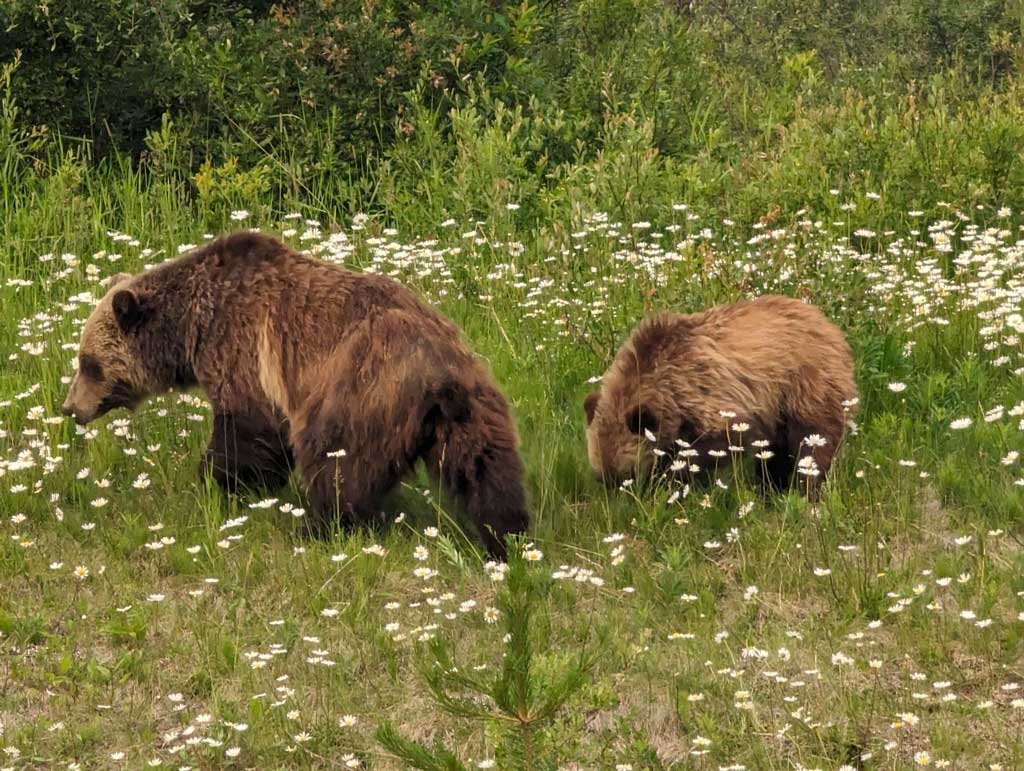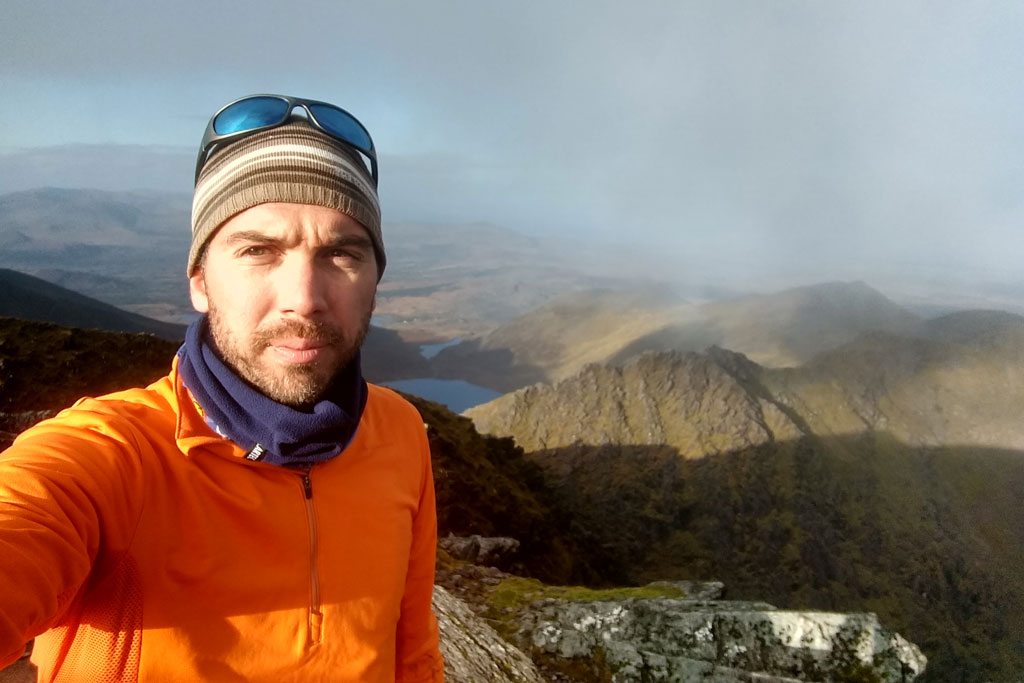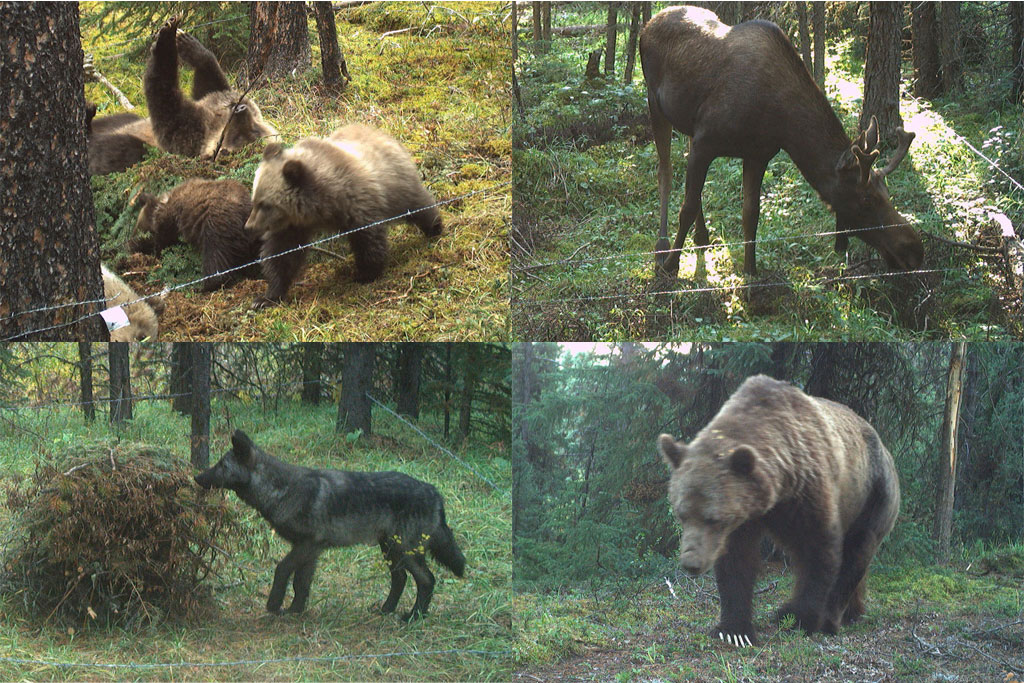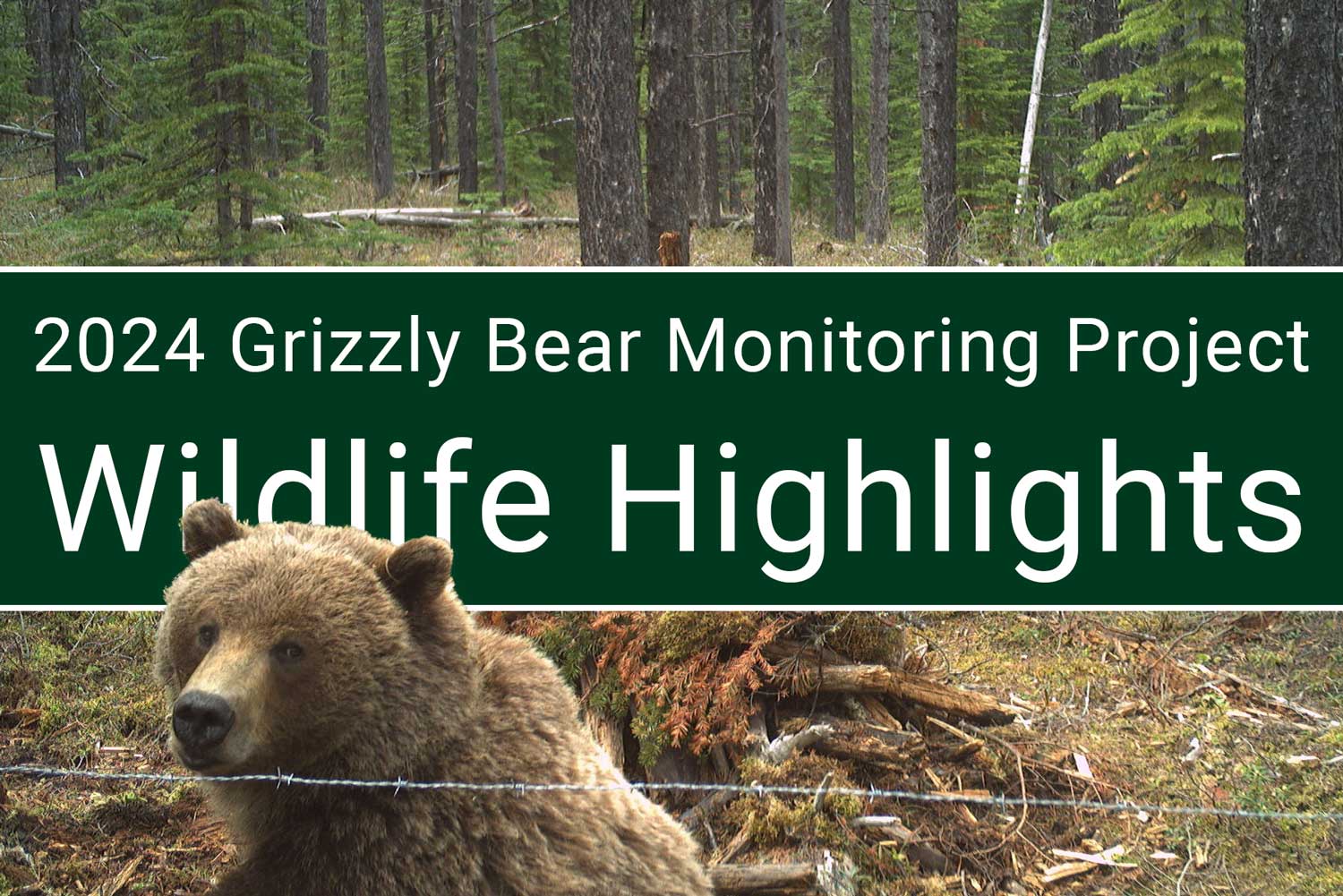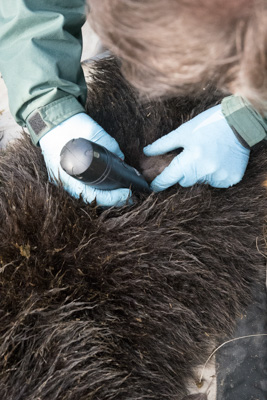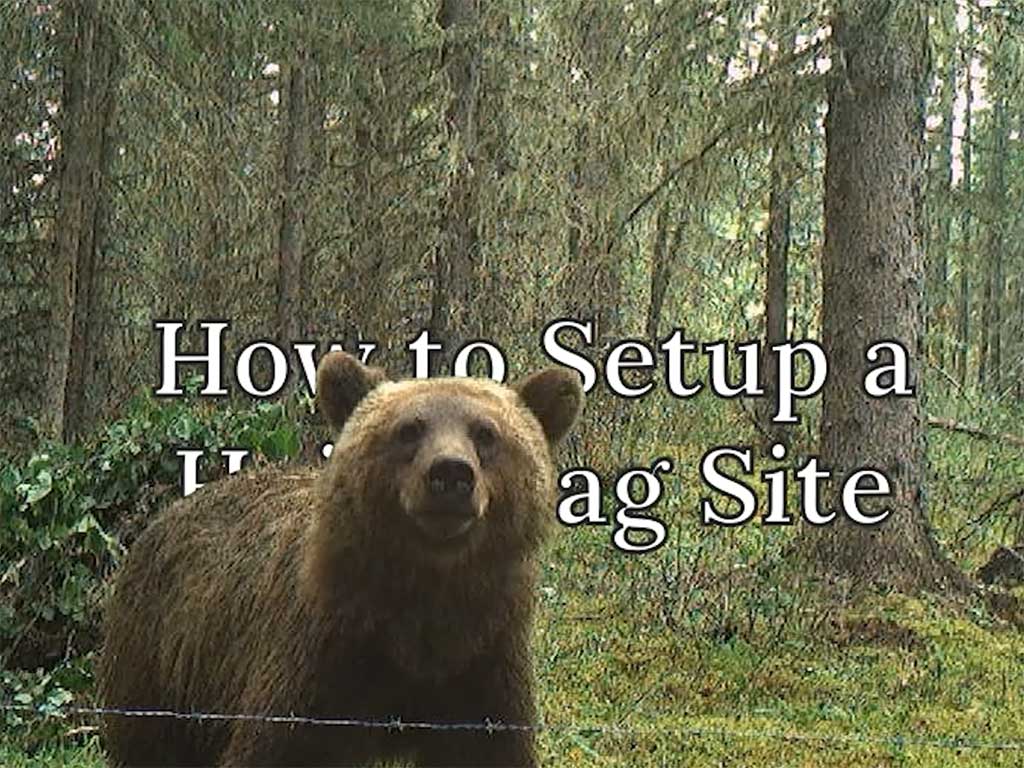
Listen to this article.
Monitoring grizzly bear populations in Alberta is an important part of ensuring the species’ long-term conservation. It took the dedication of hundreds of field techs and support staff over two decades, but we finally surveyed the last Bear Management Area in 2018. This allowed the province to get a solid, scientific estimate for the entire population (before you ask: about 900).
Why did it take so long?
The gold standard method is called DNA-based capture-mark-recapture: we collect as many grizzly bear hair samples as we can, extract the DNA, and identify unique bears. Based on the number of new vs repeat IDs, we can use statistics to estimate the total population.
To get a good estimate of an entire BMA, we might have to setup and check around 100 hair snag sites during a summer. Because these are often in remote areas, it’s very time consuming, and a lot of hard work!
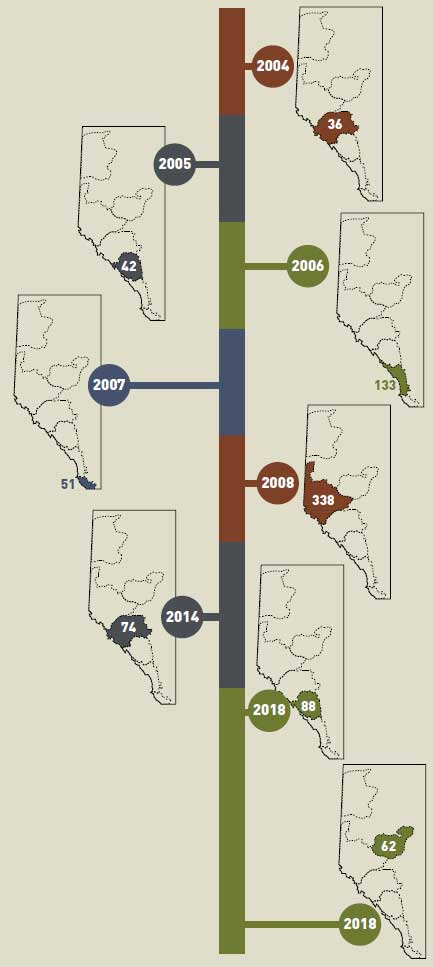
Setting Up
Next, we staple a strand of barbed wire around the clearing, about 50cm off the ground. In the past we’ve experimented with different heights and two strands, but this seems to work well. Some bears go over and some go under, but they almost always leave a tuft of hair.
Q: Doesn’t the barbed wire hurt the bear?
A: No. Bears have thick fur and very tough skin. We’ve even seen bears intentionally rubbing on barbed wire to get a good back scratch!
After that, we use dead fall, cut branches, and gather moss to build a pile near the centre of the clearing. We make it at least a foot high, and sometimes build two. This is where we will pour the scent lure; the idea is to get it off the ground so that it lasts longer and perhaps carries further on the breeze.
We also setup at least one trail camera. They give us a lot of insight about what’s happening at the sites such as which other animals are visiting, or whether bears are sneaking in without leaving hair. When we come back to check for hair, we also download the trail camera data and check the batteries.
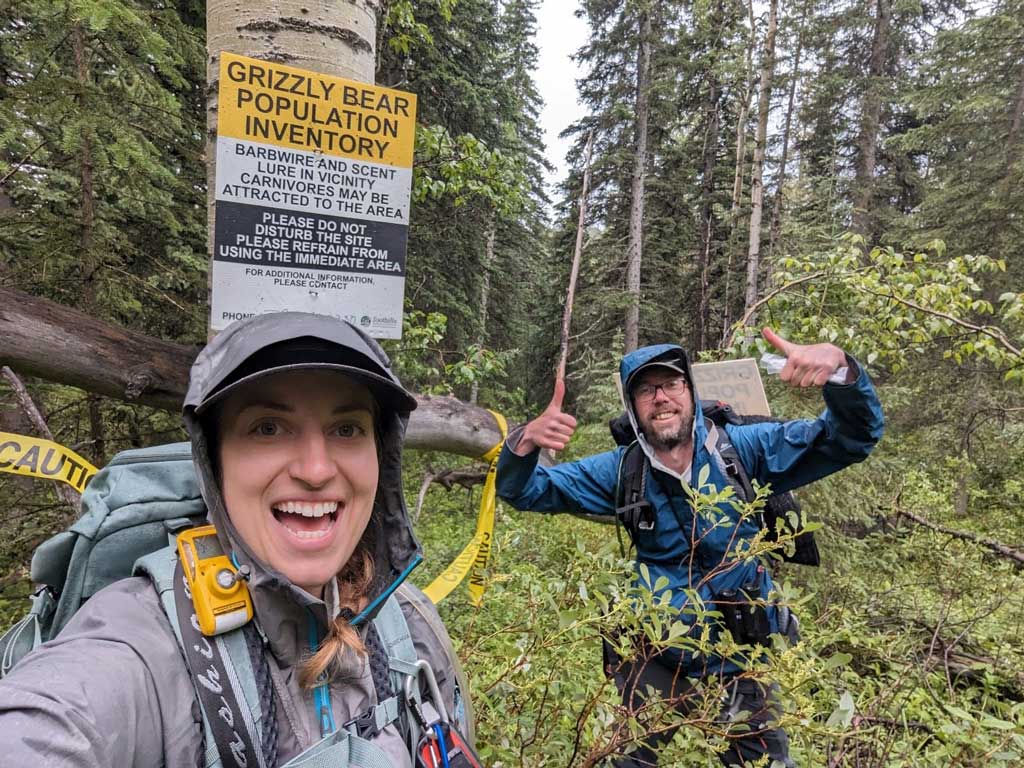
Now for some bookkeeping. We make a map of the site, number the barbs to keep future hair tufts organized, record the exact GPS location, and more.
Only after everything else is done do we finally pour the scent lure on the vegetation pile. This year, we’re experimenting with different mixtures of scent lures, but they are all pretty gross. Not only do we want to leave before the bears show up, we also just don’t want to hang around such a stinky place.
Q: Doesn’t this habituate bears?
A: No. There are no food rewards – just a scent that bears in the immediate area are interested enough in to investigate. Once they find that it’s just a pile of smelly branches, they continue on their way.
What Happens Next
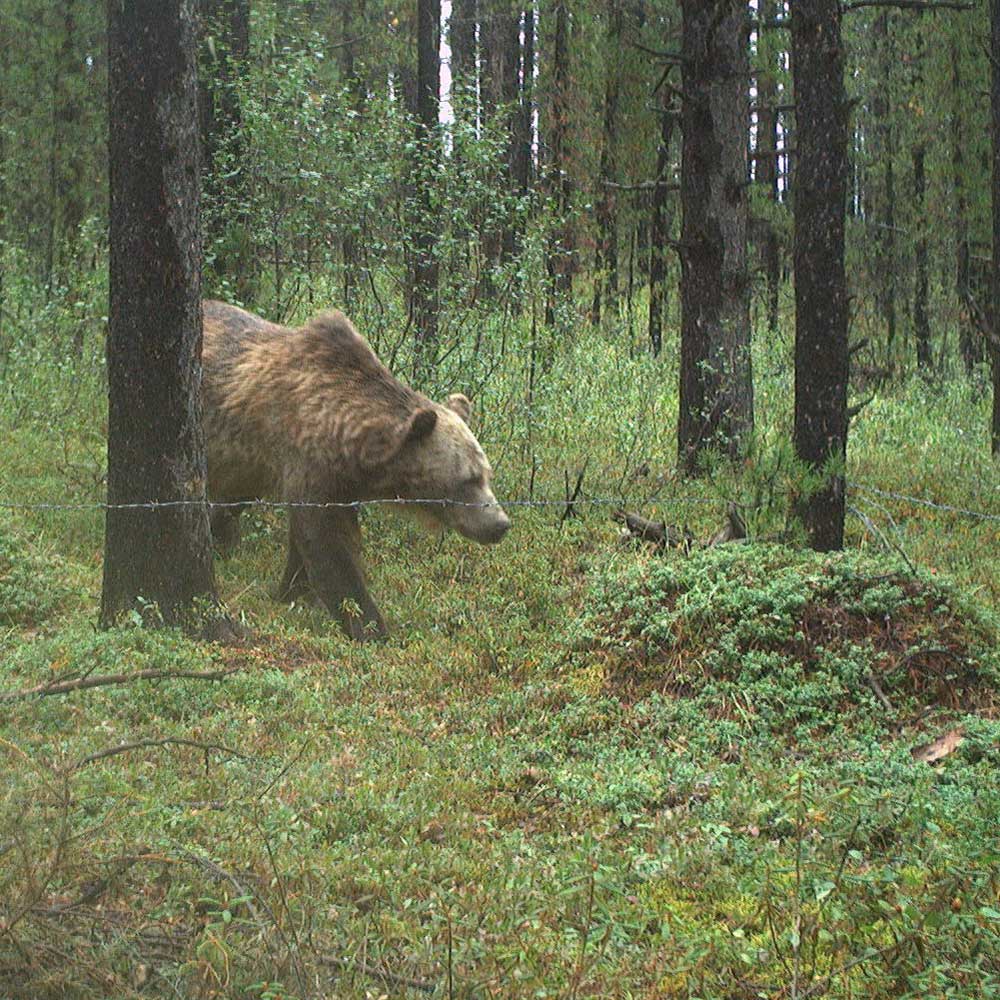
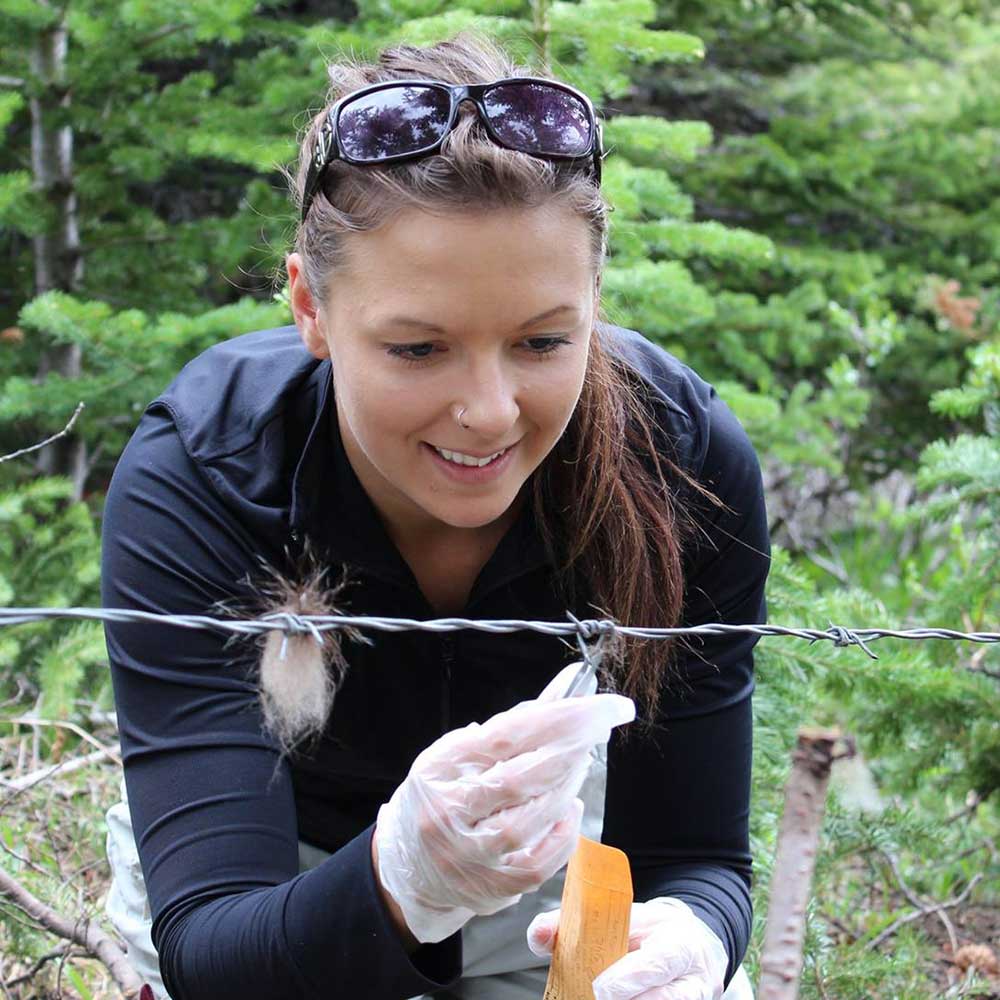

What We Learn
With enough hair snag sites in a season, we can estimate the population of resident grizzly bears in that area.
Even with a smaller sampling effort, we will still identify many grizzly bears, confirming the survival of individuals we’ve detected in the past.
We can also determine the sex of the bears and discover family relationships to help us understand the population structure.
As well as DNA, we’re also getting better at extracting hormones from the hair that can tell us about the bear’s age, health, and reproductive status.
All of this data lets us track population numbers, survival rates, reproductive success, even stress levels. We can then relate these variables to areas and features on the landscape to improve conservation efforts.
Finally, we’re also learning about the methods themselves. We carefully tinker with the protocol to make it better for scientists and the bears, and continually try to squeeze more information out of each sample. Our goal is to make these non-invasive methods as good as possible for conservation biologists working around the world on many different species.
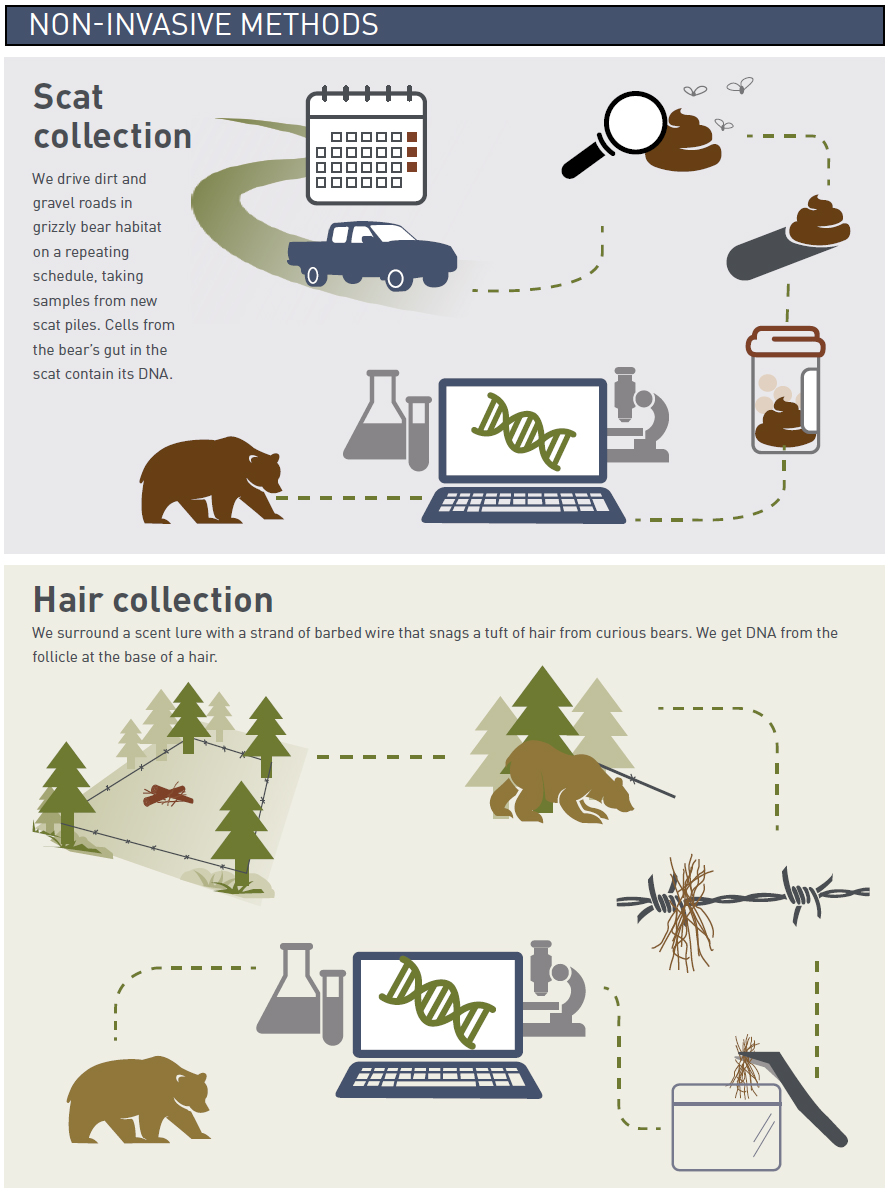
More Information
You can follow along with our current grizzly bear monitoring efforts here.
You can find more resources about our grizzly bear monitoring projects and methods here.







